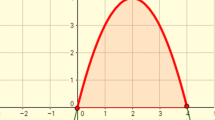Abstract
An empirical study undertaken on a cross-sectionof UNIX users at an academic site reveals a role for anactive form of help system, rather than the more usualpassive kind. Sample scripts supporting this view arepresented and the kind of aid required for theseexamples is discussed. It is then proposed that toprovide such aid requires the construction andmaintenance of an individual model of each user.
Similar content being viewed by others
References
Breuker, J. (1988). Coaching in Help Systems. In Self, J. (ed.) Artificial Intelligence and Human Learning, 310–337. London, UK: Chapman and Hall.
Collins, A. & Michalski R. (1989). The Logic of Plausible Reasoning: A Core Theory. Cognitive Science 13: 1–49.
Jerrams-Smith, J. (1985). SUSI-A Smart User Interface. In Johnson, P. & Cook, S. (ed.) Proceedings of the Conference of the British Computer Society Human Computer Interaction Specialist Group. Cambridge University Press.
Jones, J. G., Millington, M. & Virvou, M. (2000). An Assumption-based Truth Maintenance System in Active Aid for UNIX Users. In Hegner, S., Mc Kevitt, P., Norvig, P. & Wilensky, R. (eds.) Intelligent Help Systems for UNIX. Dordrecht, The Netherlands: Kluwer Academic Publishers (this volume).
Kemke, C. (1986). The SINIX Consultant: Requirements, Design, and Implementation of an Intelligent Help System for a UNIX Derivative, Bericht Nr. 11, FR. 10.2 Informatik IV, University of Saarland, Saarbrucken, FRG.
Matthews, M., Pharr, W., Biswas, G. & Neelakandan, H. (2000). USCSH: An Active Intelligent Assistance System. In Hegner, S., Mc Kevitt, P., Norvig, P. & Wilensky, R. (eds.) Intelligent Help Systems for UNIX. Dordrecht, The Netherlands: Kluwer Academic Publishers (this volume).
Virvou, M. (1992). User Modelling Using a Human Plausible Reasoning Theory. Ph.D. thesis, CSRP 251, School of Cognitive and Computing Sciences, University of Sussex, Brighton BN19QH, UK.
Virvou, M. (1998). RESCUER: Intelligent Help for Plausible User Errors. In Proceedings of ED-MEDIA/ED-TELECOM 98, World Conferences on Educational Multimedia and Educational Telecommunications, Vol. 2, pp. 1413–1420.
Wilensky, R., Mayfield, J., Albert, A., Cox, C., Luria, M., Martin, J. & Wu, D. (1986). UC - A Progress Report, Report no. UCB/CSD 87/303, Computer Science Division (EECS), University of California at Berkeley, California 94720, USA.
Author information
Authors and Affiliations
Rights and permissions
About this article
Cite this article
Virvou, M., Jones, J. & Millington, M. Virtues and Problems of an Active Help System for UNIX. Artificial Intelligence Review 14, 23–42 (2000). https://doi.org/10.1023/A:1006591231257
Issue Date:
DOI: https://doi.org/10.1023/A:1006591231257




